Tile meat from herb pork
Kachelfleisch (grilled meat) is a virtually unknown cut in Germany. Its consistency and fiber structure are more similar to chicken, and its flavor is very delicate. It's ideal for pan-frying and grilling.
Tile meat explained - Meat consultation
The properties of tile meat

The tile meat is a rather hidden cut, located in the rib bone. Because the muscle is used very little, it is particularly tender and juicy. It's ideal for pan-frying and grilling.
Raising our herb pigs
Our pig farm is located in the picturesque Markgräflerland region, on the Engler family farm. Home to the first pig hotel in southern Baden since 2019, the pigs enjoy life on straw, have ample space to roam outdoors, and live in an animal welfare barn where animal welfare and economic efficiency are harmoniously combined. The older barns are gradually being adapted to the high standards of the pig hotel.
Every three weeks, approximately 240 piglets arrive, fed locally grown grain and corn from our own harvest. They reach slaughter age after about seven months. Our slow fattening process, compared to the conventional five-month turbo fattening process, results in higher-quality, drier meat.
Unlike industrial pig production, which often requires antibiotics, our closed system enables antibiotic-free production. While conventional pork goes through many stages before reaching the consumer, our meat reaches the final consumer via just two stages.
The result is a top-quality product at fair prices, guaranteeing consumers, farmers, and butchers alike a secure income. Our weekly requirement is approximately 100 pigs, 20 of which come from partner farms in the region.
Preparation of tile meat
How to prepare tile meat on the grill – in 6 steps
A grill with a lid is essential for cooking. Whether charcoal, gas, or electric, it doesn't matter.
- Prepare a two-zone grill:
1st Zone: High heat;
2nd Zone: Indirect heat from Zone 1. - Take the meat out of the refrigerator, salt it, and after 2-3 minutes place it in the hot zone until it develops roasted aromas.
- Place the meat in the indirect zone and reduce the heat in the hot zone.
- Insert the core temperature probe into the meat.
- Remove the meat from the grill when it reaches the desired core temperature and let it rest for 2-3 minutes.
- Carve across the grain and serve on warmed plates.
How to prepare tile meat in a pan – in 5 steps
Use a heavy, solid pan for the pan.
- Preheat pan without oil for 2-4 minutes at maximum heat while the oven preheats to 120°C.
- Remove the meat from the refrigerator, season with salt, and add 1 tablespoon of oil to the pan. Then sear the meat on all sides.
- Place the meat in the oven and insert the core temperature probe.
- Remove the meat from the oven when it reaches the desired core temperature and let it rest for 2-3 minutes.
- Carve across the grain and serve.
Measuring the core temperature of the tile meat
To cook the meat to perfection, we recommend using a digital probe thermometer. Insert the tip of the probe into the center of the meat.
Tip: First, hold the probe lengthwise against the meat to estimate the penetration depth. Then insert it to the marked spot.
Tile meat core temperature
Contrary to popular belief, pork doesn't always need to be cooked thoroughly. For high-quality, carefully raised meat, a lower temperature is safe and improves the quality.
| Designation | Description | core temperature |
|---|---|---|
| Blue | Roasted on the outside, cool and raw on the inside | 42 °C |
| Rare / Bloody | Very reddish in the core | 48-52 °C |
| Medium-Rare | Slight discoloration, still strongly reddish | 52-56 °C |
| medium | Even color change, light red tone | 56-60 °C |
| Well Done / Through | Almost completely recolored, hardly any red tone | 60-64 °C |
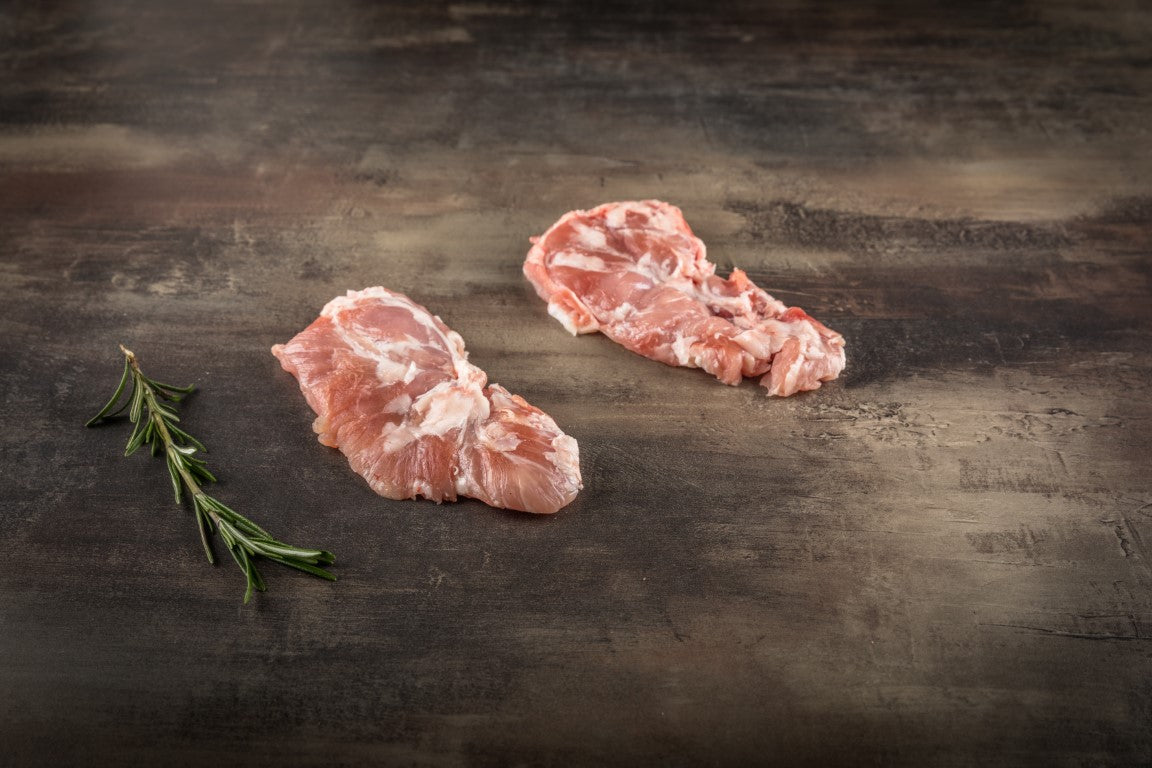
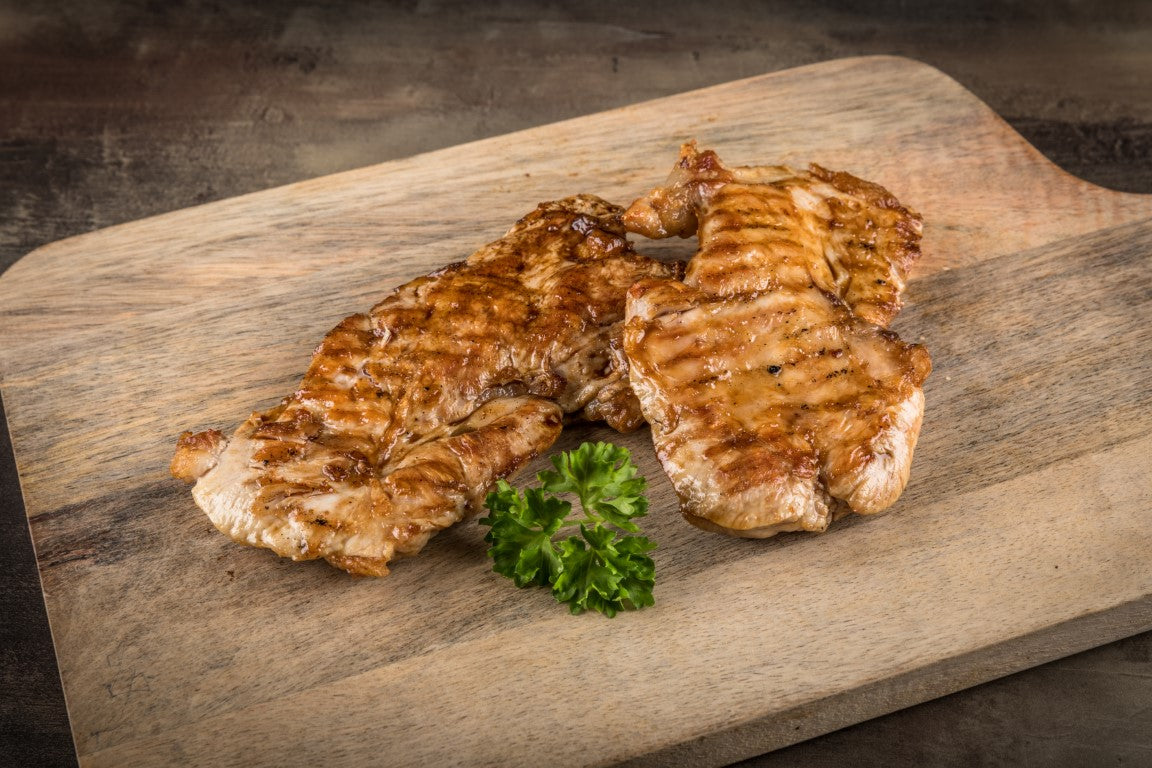
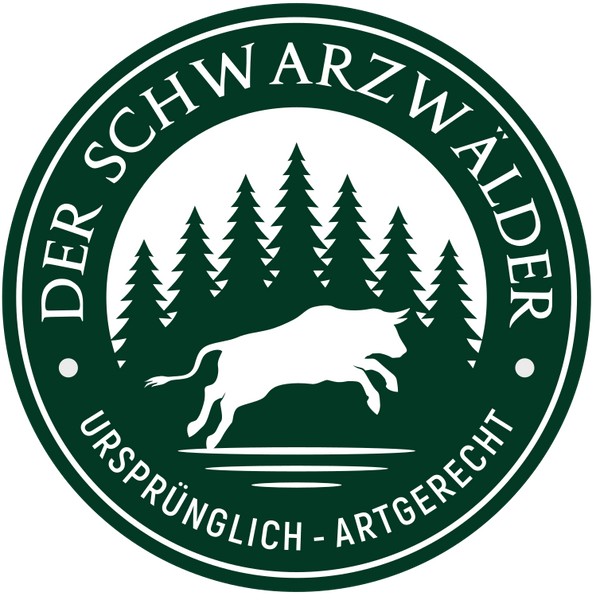

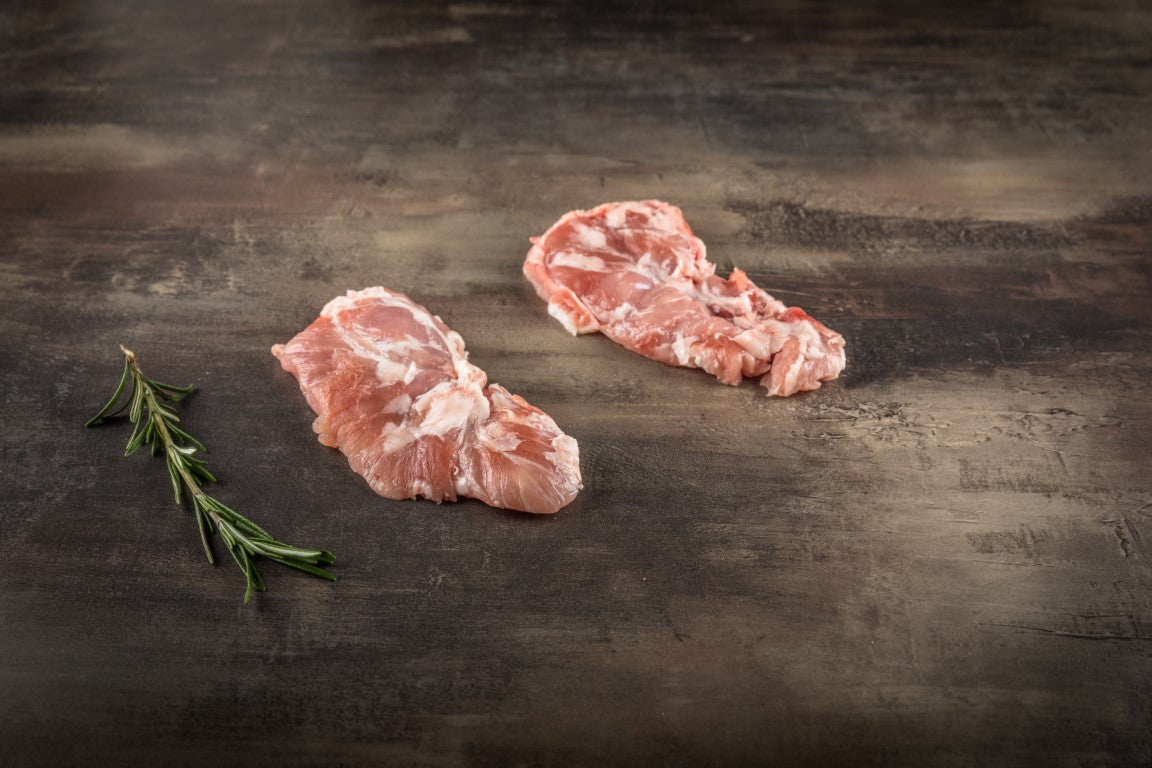
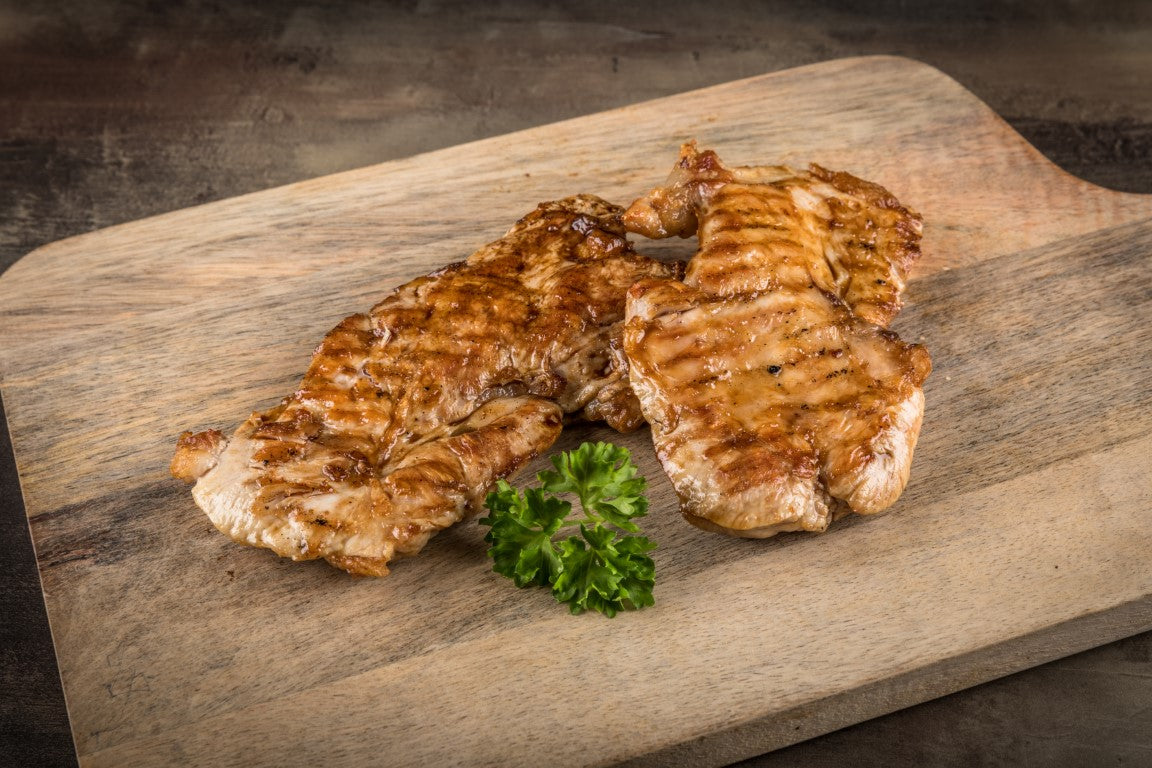
 Aus eigenem & Partner Viehbestand
Aus eigenem & Partner Viehbestand Dienstags und Donnerstags Versandtag
Dienstags und Donnerstags Versandtag

